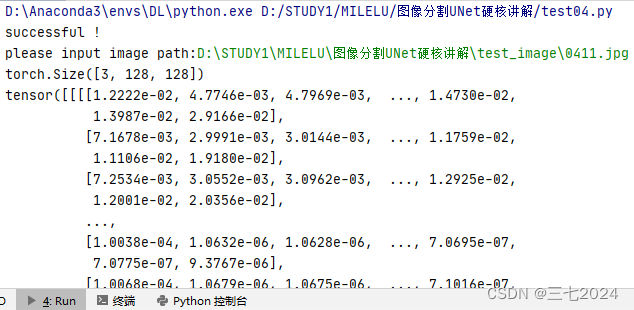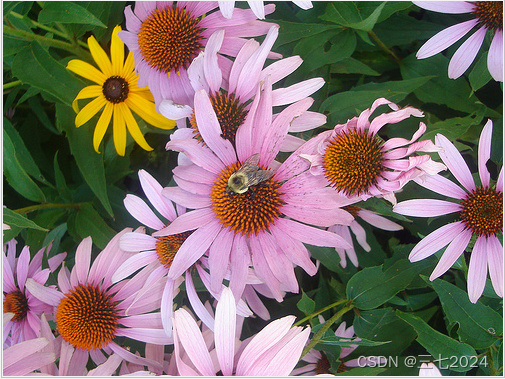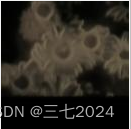本专栏内容是学习 深度学习麋了鹿 的《图像分割UNet硬核讲解》(带你手撸unet代码)部分笔记。
内容包括从数据集→网络结构→训练→测试。(附代码)
本节是 UNet 测试及代码实现 笔记
上节内容: UNet 训练及代码实现 。
下面开始本节内容:
import os
from 图像分割UNet硬核讲解.Data01 import transform
from 图像分割UNet硬核讲解.Net02 import *
from 图像分割UNet硬核讲解.utils01 import *
from torchvision.utils import save_image
net = UNet().cuda()
weights = 'params/unet.pth'
if os.path.exists(weights):
net.load_state_dict(torch.load(weights))
print('successful !')
else:
print('no successful')
_input = input('please input image path:')
img = keep_image_size_open(_input)
img_data = transform(img).cuda()
print(img_data.shape)
img_data = torch.unsqueeze(img_data, dim=0)
out = net(img_data)
save_image(out,'result/0411result.jpg')
print(out)输出结果:

输入图片:500✖375
·

生成图片:128×128

没什么可以细讲的。






















 4615
4615











 被折叠的 条评论
为什么被折叠?
被折叠的 条评论
为什么被折叠?








